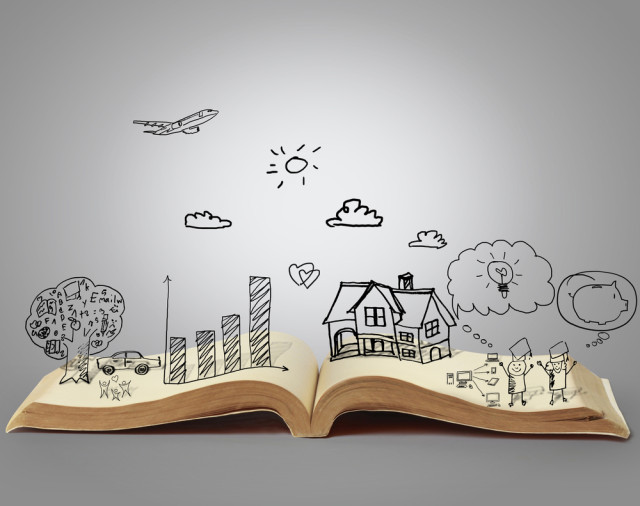Story-telling is probably the single-most popular recreational activity after sex and shopping. Story telling has now changed the way it usually worked with people sharing their story through pictures on facebook, hash tagging their sagas in 140 characters on twitter or telling their state of affairs to their friends on Snapchat. All of us aren’t just willing to share our stories, we want people to respond to them as well. We want our stories to be heard by as many people as possible.
Coming to the point, neuro-scientists have found that story-telling is exactly the way our brain processes all the incoming sensory information. Our brain tries to associate causality to any two phenomenons that occurs around us. E.g. if B follows A, we are programmed to think that A caused B. Not only this, our brain’s limbic system releases dopamine every time we hear a good story. This simply means that neuro-transmitters release the rewards in our brain that are generally associated with eating food, chocolates or stimulants or ‘uppers’. Charmed by all too familiar antics, swept by that tidal wave of emotions we have all been induced into a trance-like state by these stories.
These are the centers of brain’s limbic system associated with the rewards mechanism. Neuro-transmitters releases dopamine as a reward every time we are curious about a good story.
Throughout the centuries the same story crops up in a different avatar. It’s also a proof of the primal function of a story. We all love a story in which a hero sets forth on an adventure of a lifetime, discovers his identity after facing myriad of challenges, falls in love and returns home triumphant. In his seminal book ‘The Hero with a Thousand Faces’, Campbell proves that all myths, fables in the world throughout the centuries share a fundamental structure, he called the monomyth. I quote from the book’s introduction, “A hero ventures forth from the world of common day into a region of supernatural wonder: fabulous forces are there encountered and a decisive victory is won: the hero comes back from this mysterious adventure with the power to bestow boons on his fellow man.”
Come on people, haven’t you always wondered at the similarities between Neo from the Matrix Trilogy and Frodo from the Lord of the Rings epic. Don’t take me too literally, but the basic plot is very similar once you peel away the embellishments. Think a bit harder now, haven’t the similarities between the characters of Gandalf again from LOTR epics, Dumbledore from Harry Potter, Yoda from Star Wars or Brom from Inheritance Cycle struck you as fascinating. We have all loved them them for their all seeing wisdom, years of experience, quirky humour, never say die attitude. These characters can be called as the Mentor figure.
For those amongst us who have indulged in ludic reading i.e reading for pleasure, we have felt as one with the story. We have cried and laughed at the most impossible of situations that can never occur in real life. Sometimes while watching a movie, you have found yourself horror struck and trembling with fear despite the fact that you know it isn’t real. This is an acquired skill. We have learned to suspend our cynical disbelief momentarily and enter into a dream like realm. Researchers have called this phenomenon as ‘suspension of disbelief’.
Hundreds of bedtime stories for years have hemmed our brains to multi-task, to enjoy and pulsate with the momentum of a story while keeping in mind that it is not real.

That is why, story-telling has never been restricted to a pastime, but has been used by teachers, salesmen, dictators, fascists to drive us emotional. Story-telling has been recognized as the most significant form of persuasion. These days not only the studio houses of film-makers realize the importance of story-telling, but also the previously rational, logic driven corporate sector. They spend billions of dollar so as to make their brand communicate a story, to impact their consumers emotionally, to fast-track their sales plans and improve bottom line. Advertisers today are hard-pressed to churn out stories that stay with the consumer.
Stories that make us either laugh or cry and get talking us about their brand. This goes on to prove that in the war between facts and figures versus emotions, logic versus gut feel or right hemisphere versus left hemisphere of our brain, the right one seems to be coming into its own now.
So, go on, and share your story.
By Shriya Dargan





































